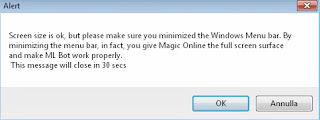"The most important thing" is a book by Howard Marks that has gained some renown in the real world financial community. Mr Marks is managing a hedge fond valued at over 75 billion dollars. For twenty years he has been writing newsletters to the share holders. Over time, these newsletters have received a cult following. Mr Marks has defined the twenty most important things to keep in mind when investing in stock.
When I return to financial subjects in my blog posts here on mtgolibrary, I will often draw parallells between MTGO Finance and the real world stock finance business. This blog post is a first step.
Howards Marks twenty most important things converted to MTGO Finance
1. Think one step further. "A good card means a good price" is basic thinking. The quality of the card is often already accounted for in the price. If evaluation is wrong for some reason a really good card can have a really bad price and be about to crash.
2. Understand efficient markets and their limitations. The MTGO finance market is a less efficient market than the real world stock exchange, but there is efficiency and its opposite. Why can a price rise too high of fall too low? What are the limitations to the basic rules of supply and demand?
3. Value. Successful investments are built on the inherent value of a card. How is this card used? Will it continue to be used this way?
4. Relationship between price and value. The price of a card is determined by many factors, of which value is one.
5. Understand risk. Forget the finance theories. Risk is subjective, hidden and impossible to measure. Your "secure" investment is less secure than you think. If eveyrone is buying Snapcaster Mages due to rotation, maybe it is still overvalued.
6. Recognize risk. There is always risk. Risk increases when a card's price goes up but becomes real when a card's price falls.
7. Control risk. It is often right to take risks and risks also have an upside (more risk = more to gain) but you always have to control your risks. One way to control risks it to take many non-related risks.
8. Understand the cyclic nature of card prices. I wrote a whole article about this here:
http://puremtgo.com/articles/mtg-finance-seasonal-trading-cycles-over-year-magic-online
9. Know the pendulum. The pendulum swings due to mass hysteria. When the basic speculators hit a card, be aware of it. When they leave a card, be aware of that. Understand the herd.
10. You are your own worst enemy. Be aware of your psyche and the way it fails you and stops you from reaching your goals. Do not repeat mistakes.
11. Go against the herd. When they sell out, buy when they have damaged the price enough. When they buy, be there to sell to them at the top.
12. Find the hidden treasures. This is much easier when it comes to Magic cards than stocks. They are out there. They are undervalue. Some bots are selling too cheap. Find those treasures.
13. Be patient. Most MTGO speculators think in terms of weeks. If you can gain 200% over two years, you will be a millionaire within a decade, given an average starting bankroll.
14. Know what you do not know. There are major kinds of losers on the stock exchange; Those who know it all and those who don't know anything. You must be inbetween and you must know why you don't know it all. This is why you have to keep careful books - highlightning your mistakes is the only way to be aware of them. If you do not do this, you will overestimate your skill and think your financial gains are bigger than they really are.
15. Think about where and when you are right now. The future is uncertain, but it is possible to understand what is happening right now and why.
16. Realize the importance of luck. Do not think your luck is your skill as that will make you someone that knows it all and cause you to overestimate your skill, something which will lead to future disasters.
17. Invest carefully.
18. Avoid the pit falls. Classic mistakes are often repeated mistakes. Read about others mistakes before making them yourself.
19. Make cards valuable. Very few suceed in this but if you know that your or your team's actions will increase the value of a card, invest accordingly.
20. Have reasonable expectations. If you could earn 200% a year doing mtgo finance, why is not everyone else doing it? Maybe you can, but you have to know why they can't. What makes you special?
 We have just completed a number of maintenance tasks on the mtgolibrary.com server.
We have just completed a number of maintenance tasks on the mtgolibrary.com server.
















































